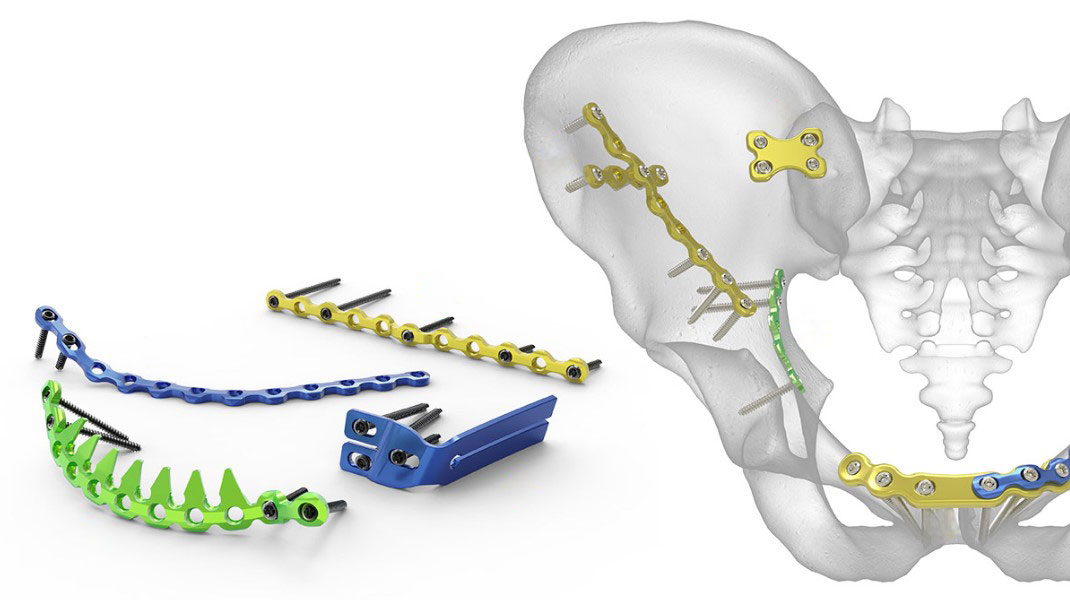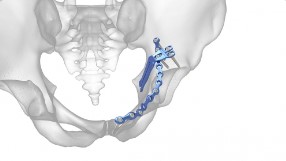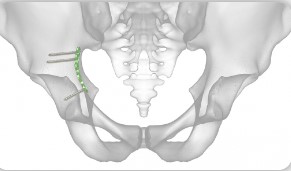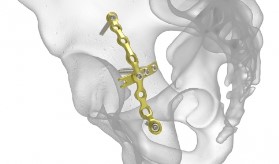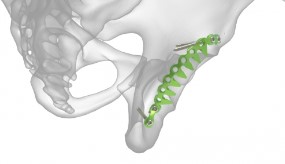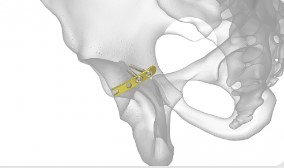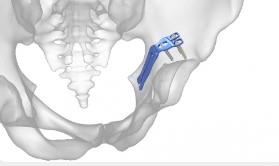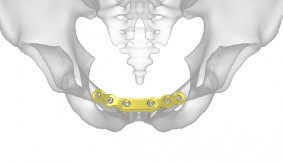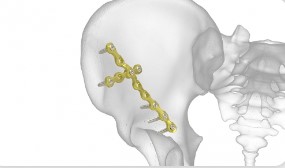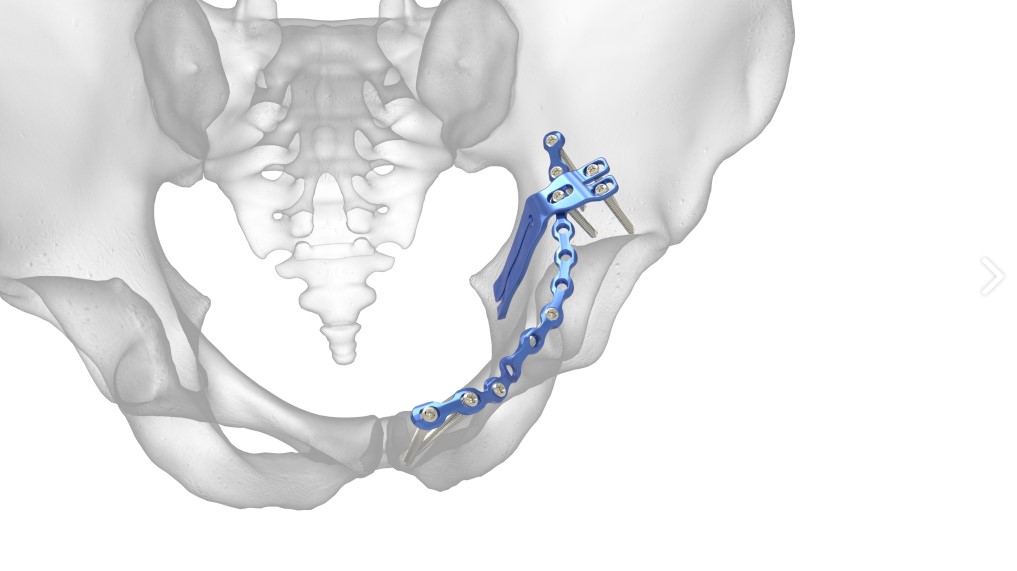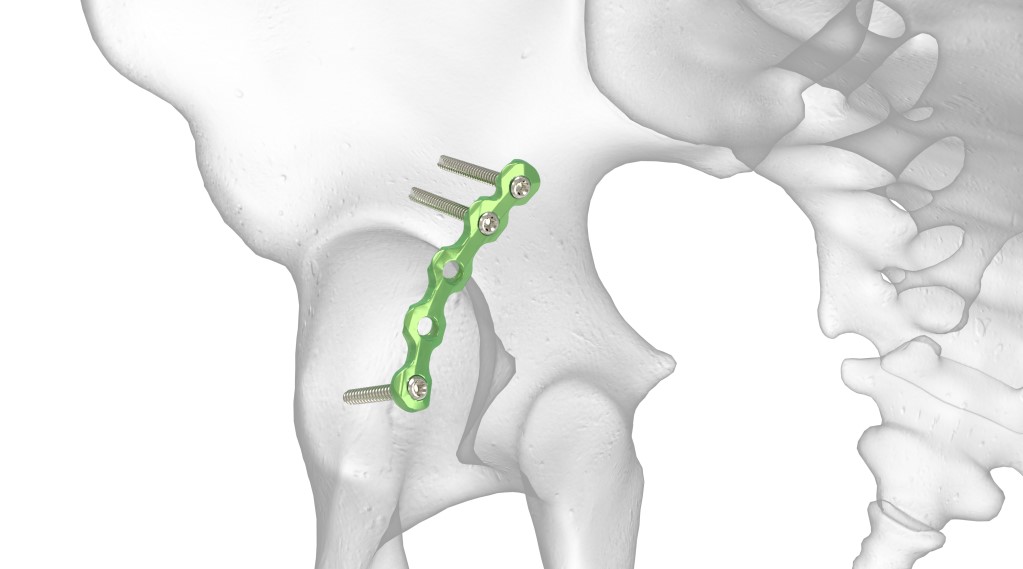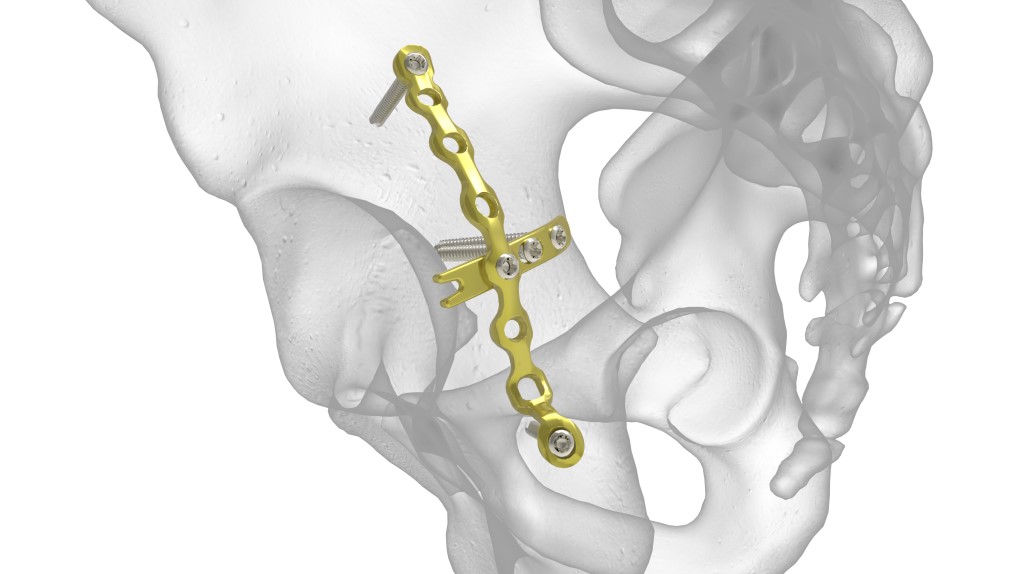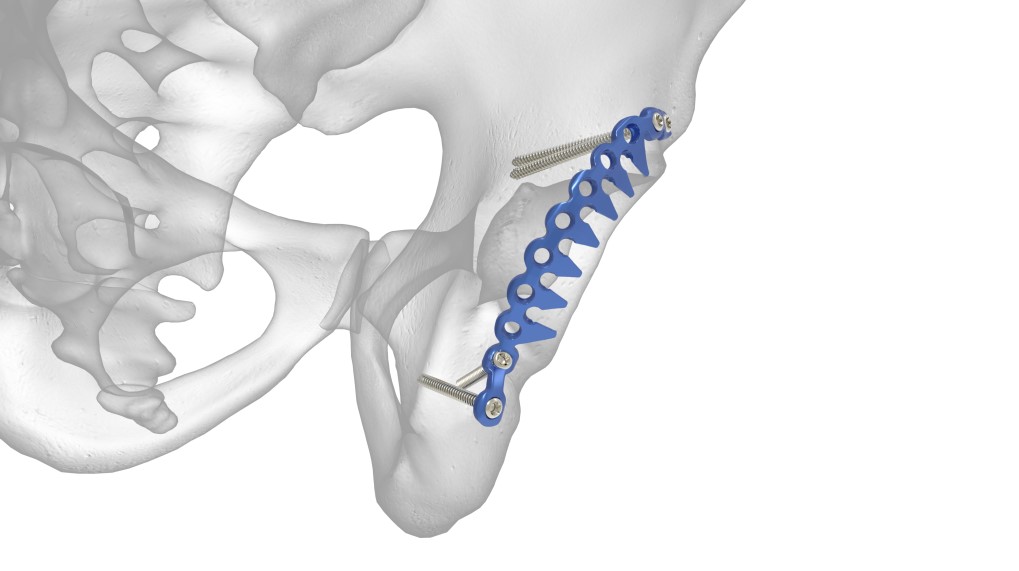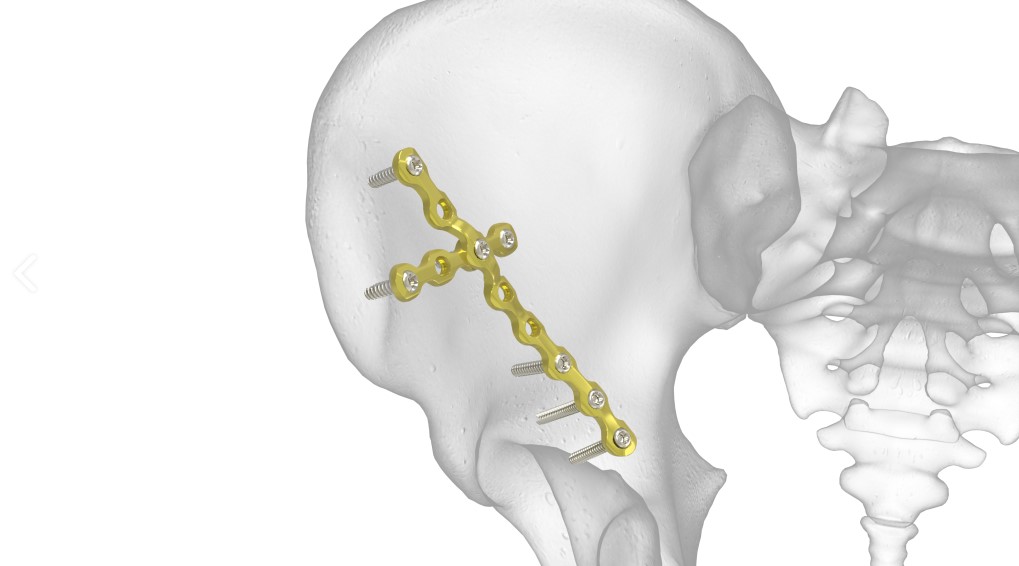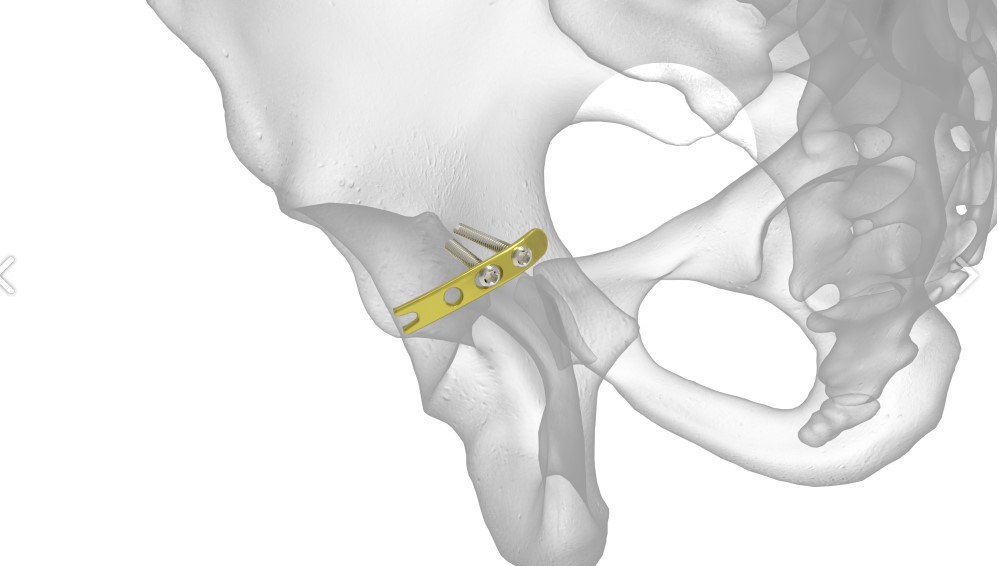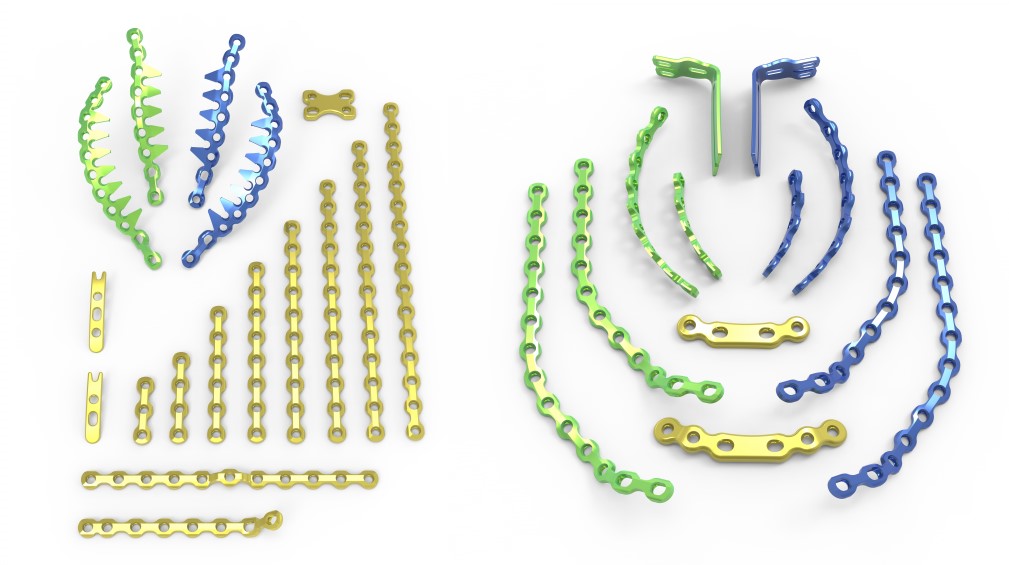Pelvic Plating System Surgical Technique
Pelvic Plating System Orthopaedic Solutions Fixation Products
DOWNLOAD BROCHURE
Pelvic Plating System Case Study: Acetabular Fracture with Displaced Anterior Column and Quadrilateral Surface Disruption
DOWNLOAD BROCHURE
Pelvic Plating System Case Study: Both Column, Acetabular, and Contralateral Rami Fractures Case Study Treated with Acumed Pelvic Plates
Pelvic Plating System
Overview
The Acumed Pelvic Plating System is a comprehensive set of plates, screws, and instrumentation designed for fractures, fusions, and osteotomies of the acetabulum, sacrum, ilium, and pelvic ring.
The Pelvic Plating System can also be used for sacroiliac joint dislocations and pubic symphysis disruptions. The implants in the Pelvic Plating System are strategically precontoured where it may save time for the surgeon and left uncontoured where patient anatomy may require personal contouring.
Video: Pelvic Plating System Overview
This is an animated overview of the Pelvic Plating System, featuring the Reconstruction and Interlocking Reconstruction plates, Pubic Symphysis plate, Anterior Brim plates, Quadrilateral Surface plate, Superior Sacroiliac plate, Acetabular Spring plate, Posterior Wall Acetabular plate, Intrapelvic plates, and others.
The Anterior Brim Plate is precontoured in places where it may save time for the surgeon and uncontoured in areas where manual bending may be preferred. The plate is available in 12- and 14-hole configurations to accommodate varying patient anatomies. Slots and holes on the anterior end of the plate are designed to interface with the Acumed Pubic Symphysis Plate, if desired.
The Intrapelvic Plate is precontoured to approximate the anatomy of the medial wall of the pelvis below the pelvic brim and aid in the buttressing of fractures. The Intrapelvic Plate has four angled posterior holes that are designed to direct screws away from the acetabular joint and is available in 5-and 9-hole configurations to accommodate varying patient anatomies.
Designed to address the most common type of acetabular fracture, the Posterior Wall Acetabular Plate is precontoured distally to match the curvature of the ischial tuberosity. The proximal end of the plate is left uncontoured with the proximal holes grouped together for optimized bone purchase away from the acetabular joint.
The Curved Posterior Wall Acetabular Fragment Plate features a precontoured distal end, designed to match the anatomy of the ischial tuberosity. Prongs along the center region of the plate spread out to capture comminuted fractures of the acetabular wall, while the proximal end curves around the acetabular cup. Proximal screw placement is intended to optimize bone purchase while avoiding the acetabular joint. The plate can be further contoured and trimmed as necessary.
Specifically designed to address fractures of the posterior wall of the pelvis, the Acumed Acetabular Spring Plate is available in 2- and 3-hole configurations to accommodate varying patient anatomies. Prongs incorporated into the lateral end of the plate are intended to help retain fragments in the posterior wall, while the center slot allows for fine-tuning of plate placement. In addition, the Acetabular Spring Plate can be used with other plates in the Acumed Pelvic Plating System.
The Quadrilateral Surface Plate is designed to buttress the medial wall of the acetabulum. Separated tabs incorporated into the plate are intended to offer two points of contact on the medial wall, and add stability to the fragment. The Quadrilateral Surface Plate can accommodate screw placement on either the pelvic brim or in the medial wall, and is able to be used in conjunction with the Anterior Brim Plate, if desired.
The Pubic Symphysis Plate is precontoured to approximate the anatomy of the pubic crest. Available in 4- and 6-hole configurations, the plate can accommodate varying patient anatomies to address disruptions of the Pubic Symphysis joint. The plate features two compression slots, one for each side of the pubic symphysis joint. Each compression slot offers 1 mm of compression, allowing for up to 2 mm of compression total. The slots of the plate are designed to interface with the Acumed Anterior Brim Plate, if desired.
The Acumed Sacroiliac Plate allows for two screws to be placed on either side of the sacroiliac joint, thereby requiring only a single plate for joint fixation. The plate has a contoured undersurface, intended to match the natural arch in patient anatomy over the sacroiliac joint. Two screw slots facilitate fine-tuning of the plate placement before final fitting of the plate.
The 3.5 mm Reconstruction Plate is made available in 3- to- 16-hole configurations, providing an array of options to address many different fracture patterns within the pelvis. Additionally, these plates can be contoured and trimmed as necessary to further accommodate the various regions of the pelvis. In order to allow for the treatment of a wide variety of pelvic fractures, the Acumed 3.5 mm Interlocking Reconstruction Plate is designed to overlay other plates in the Pelvic Plating System. In addition, the plate can be contoured and trimmed, as necessary, to address many different fracture patterns of the pelvis.
Case Studies
Pelvic Plating System Case Study: Both Column, Acetabular, and Contralateral Rami Fractures Case Study Treated with Acumed Pelvic Plates
Patient History: A 46-year-old female with preexisting primary osteoarthritis was driving a moped when she was struck by a car. She was brought to the trauma center with a closed head injury and right acetabulum fracture. She was initially treated in skeletal traction until her neurological status improved. Computed tomography (CT) scan confirmed diagnosis of a displaced anterior column comminuted medial wall acetabular fracture. Given the amount of displacement and concern for a complicated total hip replacement, the decision was made to stabilize the acetabulum fracture initially and proceed with total hip replacement on a delayed basis if necessary.
Case Studies
Pelvic Plating System Case Study: Acetabular Fracture with Displaced Anterior Column and Quadrilateral Surface Disruption
Background: 22 year old otherwise healthy male in a motor vehicle accident. No loss of consciousness, however there was a prolonged extraction. His GCS is 15 on arrival to ER. Trauma work up is only positive for an acetabular fracture. He is fluid resuscitated and thorough physical exam and radiographic evaluation is undertaken. Right both column acetabular fracture and contralateral rami fractures are identified. While the patient had dome coverage due to his young age and the disruption of his quadrilateral surface he was offered surgery to minimize risk of medial subluxation. Titanium precontoured plates were selected for multiple reasons.
Image Gallery
Info Contact
| HEAD | OFFICE |
| Tel | +27 (11) 966 0600 |
| info@medhold.co.za | |
| Address | MSI Business Park, 68 Rigger Road, Spartan, Kempton Park, Gauteng, 1619 |

